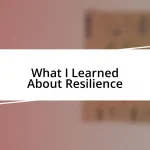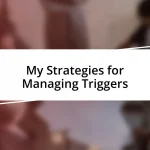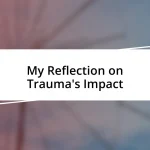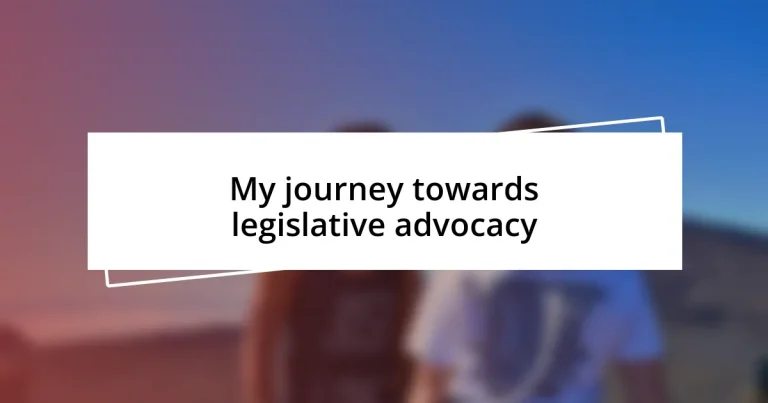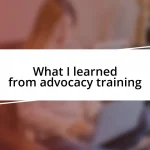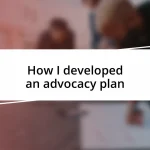Key takeaways:
- Effective legislative advocacy involves understanding the legislative process, engaging with community members, and building relationships with legislators to amplify voices and drive change.
- Personal narratives and shared stories empower individuals and create a collective mission for reform, highlighting the emotional weight behind policy issues.
- Utilizing data and feedback, as well as being adaptable, strengthens advocacy strategies and ensures that they resonate with diverse communities.
- Measuring advocacy success can be gauged through tangible policy changes, community feedback, and the ripple effect of inspiring others to share their stories.
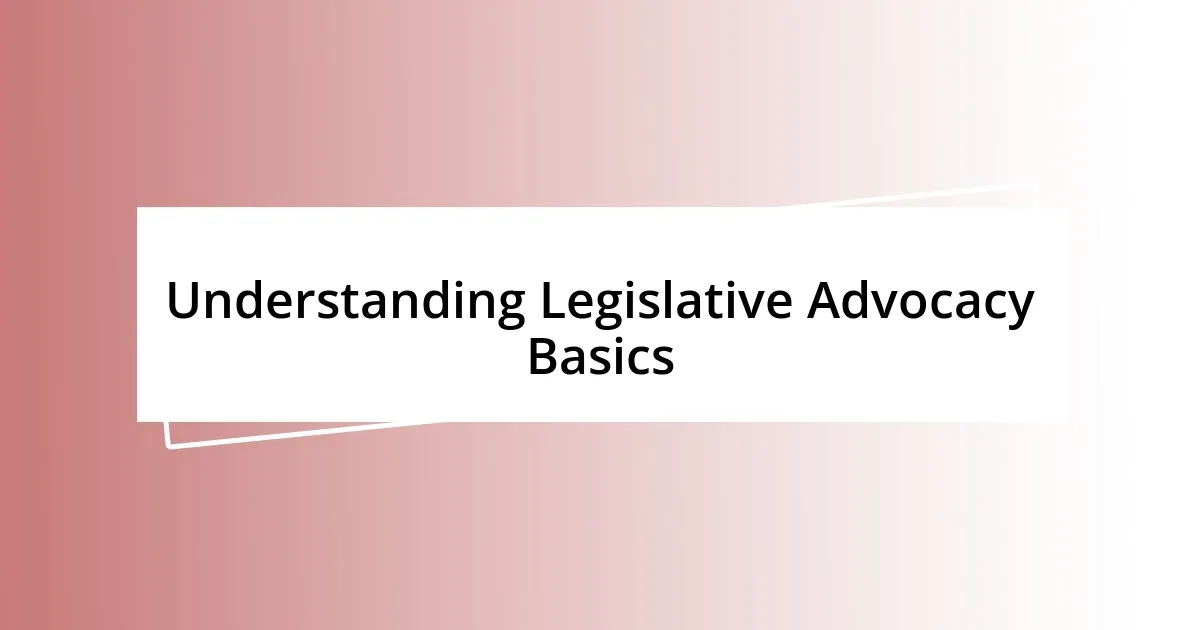
Understanding Legislative Advocacy Basics
Understanding the basics of legislative advocacy is like unlocking a door to influence and change. I remember my first encounter with the process—walking into a committee hearing, my heart racing, feeling both excitement and fear. It struck me then how crucial it is to grasp the roles of elected officials, the legislative process, and the channels through which advocacy takes place. Have you ever wondered how your voice could shape laws that impact your community?
At its core, legislative advocacy involves not just speaking up, but also understanding the environment in which you’re operating. I often tell those new to advocacy to familiarize themselves with the stakeholders involved, from legislators to interest groups. Each interaction I had taught me how different each player’s influence could be—like realizing that sometimes an email or a casual chat can spark significant change.
I find that understanding the legislative process, with its timing and complexities, can significantly boost your credibility when advocating. When I first dove into this journey, I faced a steep learning curve, uncovering layers of bureaucracy that could be frustrating. Yet, each hurdle illuminated the importance of persistence, revealing that every small effort contributes to the larger goal of societal improvement.
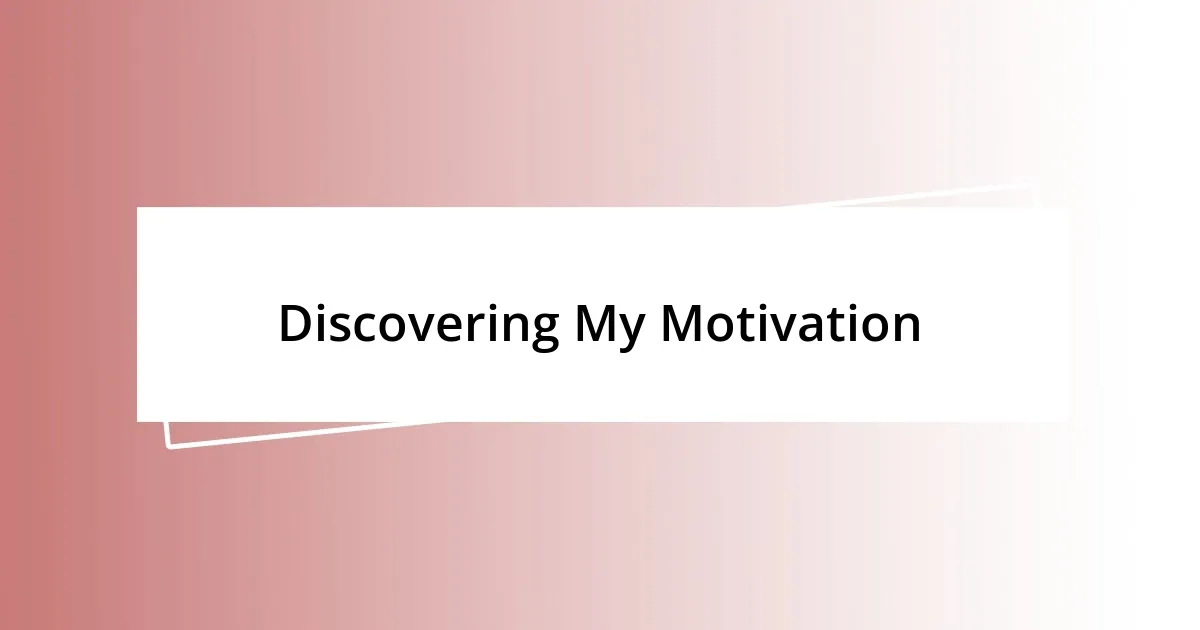
Discovering My Motivation
Discovering my motivation was like peeling back layers to expose my core beliefs. Through this journey, I began to recognize that my passion for advocating came from personal experiences and a desire for change. It became clear to me that my childhood encounters with injustice—whether it was witnessing vulnerable communities struggle or seeing friends affected by policies that overlooked their needs—propelled me forward. Those moments were pivotal, instilling a fire within me that demanded action.
- My first advocacy experience was at a town hall meeting, where I shared my family’s struggles with healthcare access.
- I realized that when I spoke, others resonated with my story, creating a shared sense of purpose.
- Observing how my words influenced others reinforced my belief that individual narratives hold power in the legislative process.
- Each story I collected, from individuals grappling with housing insecurity to those advocating for environmental issues, fueled my determination to fight for policies that matter.
- I found motivation not only in my own voice but in the stories of others, binding us in a collective mission for reform.
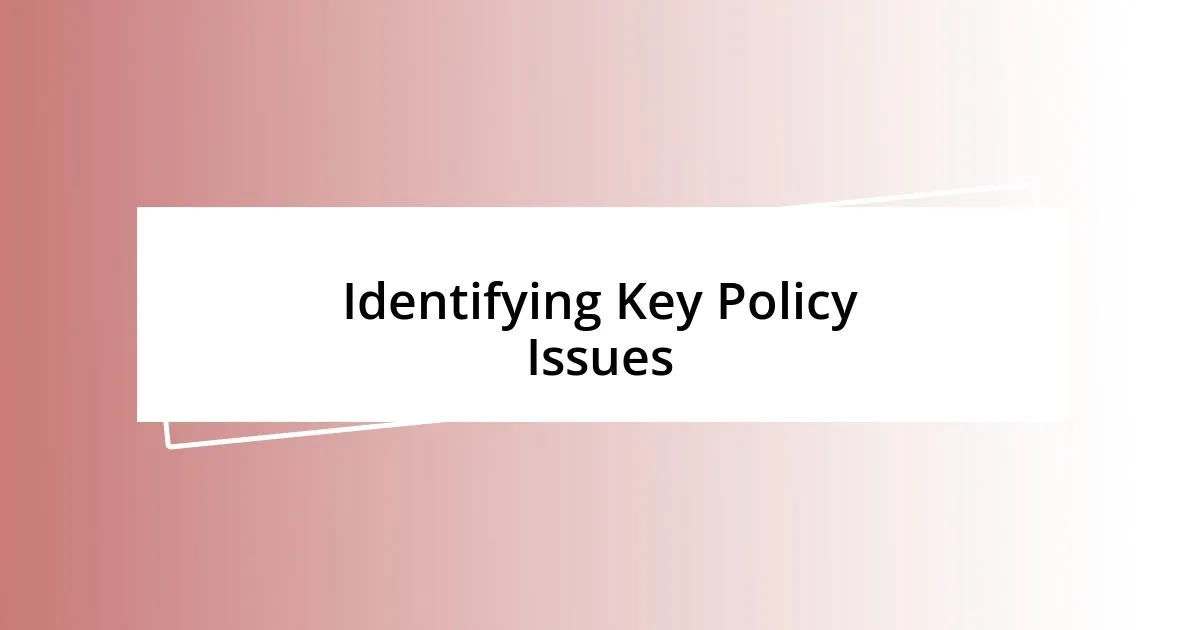
Identifying Key Policy Issues
Identifying key policy issues often feels like piecing together a puzzle—each piece represents a unique need or concern within the community. For instance, during my initial foray into advocacy, I attended a community event that highlighted multiple challenges like education disparities and healthcare access. Listening to residents share their struggles opened my eyes to the diverse voices that must be considered when pinpointing policy priorities. Recognizing these issues isn’t just about what appears on the surface; it’s about digging deeper to understand their impacts on people’s lives.
As I progressed in my advocacy journey, I learned the importance of engaging with community members directly. One evening, while volunteering at a local shelter, I heard firsthand accounts of housing insecurity that were heartbreaking yet enlightening. These conversations provided me with insights that statistics couldn’t convey. They reminded me that policies should be reflective of lived experiences. By actively listening, I was able to identify key issues that resonated deeply with the community, leading me to advocate for housing reform with newfound passion and clarity.
When evaluating policy issues, I often find it helpful to categorize them by urgency and impact. For example, issues related to public safety might demand immediate attention, while educational reforms could be more long-term. This systematic approach was pivotal during a project where I collaborated with fellow advocates to prioritize policy goals for our legislative agenda. It became clear that not all issues carry the same weight, but understanding the nuances allows for strategic advocacy that resonates both emotionally and practically with decision-makers.
| Policy Issue | Impact |
|---|---|
| Healthcare Access | High – affects health outcomes and equality |
| Education Disparities | Medium – long-term societal implications |
| Housing Insecurity | High – immediate need for safe shelter |
| Public Safety | Critical – urgent need for community protection |
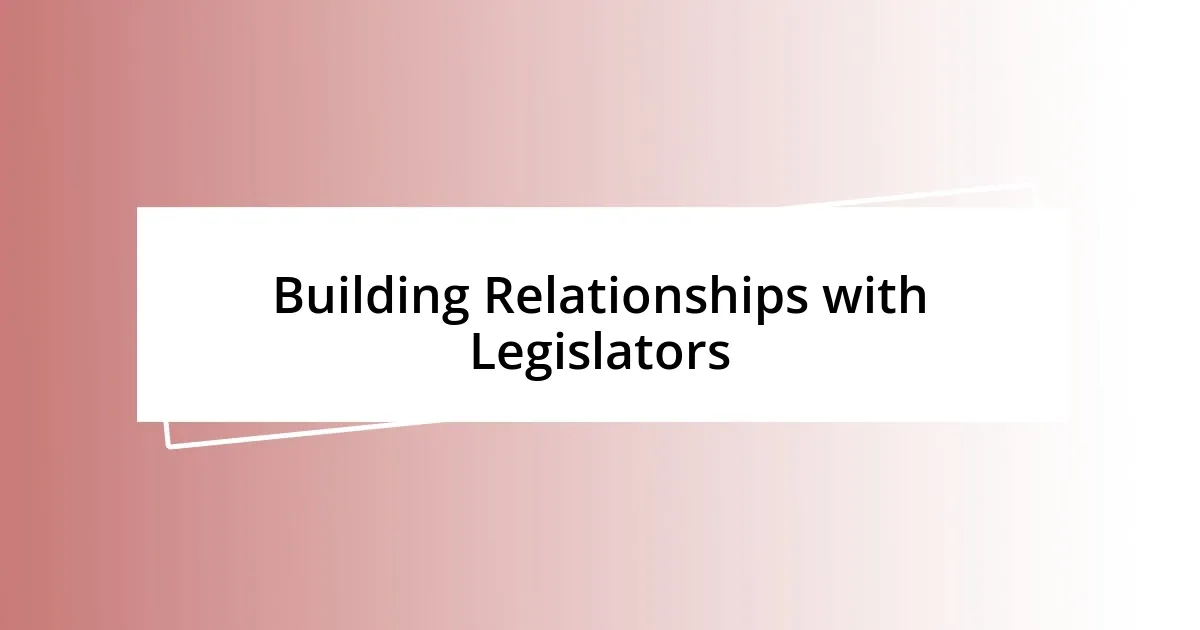
Building Relationships with Legislators
Building meaningful relationships with legislators can often feel daunting, but I’ve learned that authenticity is key. I remember attending a regional legislative conference, where I struck up a conversation with my state senator about environmental policies. Instead of diving straight into the issues, I shared a personal memory about my family’s trips to the local river when I was a kid, and how I want future generations to experience the same beauty. That human connection opened the door for a more engaged dialogue, one that transcended the typical formalities.
Creating and nurturing these relationships involves more than just one-off meetings; it’s about consistent engagement. I’ve discovered that attending town halls and sharing my story multiple times amplifies my presence and establishes me as a serious advocate. Each time I return and see the same faces, it creates a sense of familiarity and trust. Have you considered how often you reconnect with your legislators? My experience shows that regular communication makes them more likely to remember you when issues arise.
The emotional weight of these interactions can be profound. I once reached out to my local representative after a particularly intense community meeting on healthcare disparities. I shared the story of a friend who struggled to access mental health services, expressing the urgency through my own frustration. This approach transformed our conversation into a shared commitment, as I saw the legislator’s expression change, recognizing the real human stakes involved. By putting a face to the issue, I felt empowered to advocate not just for my friend but for countless others in similar situations. This emotional connection is what truly moves the needle in legislative advocacy.
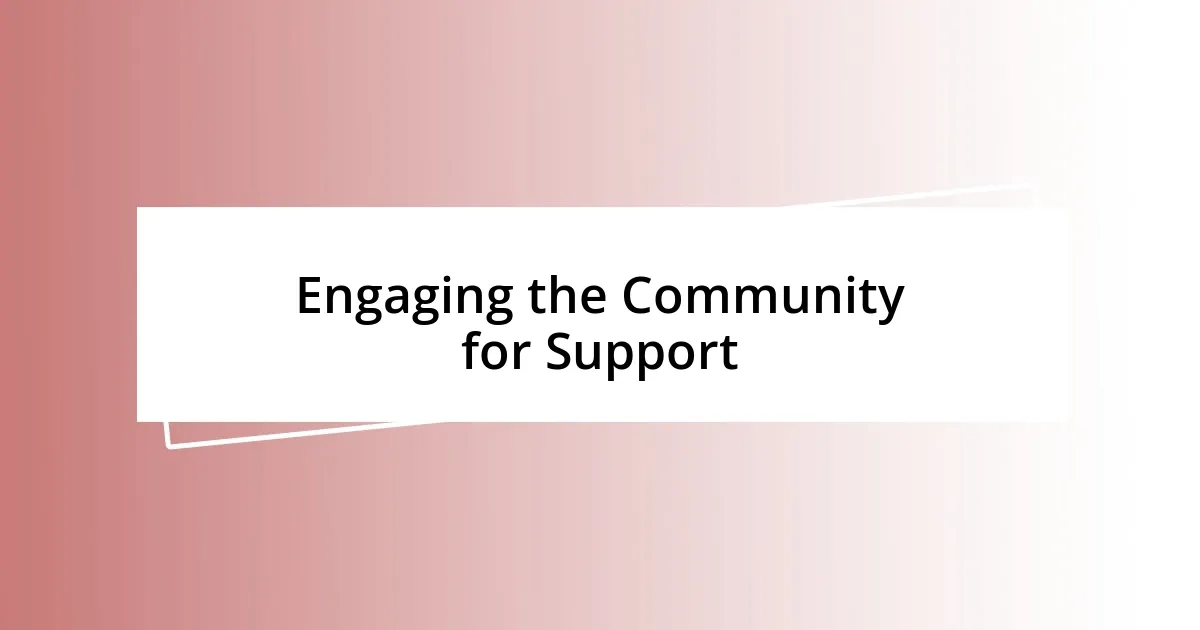
Engaging the Community for Support
Engaging the community for support is about forging genuine connections with individuals who are impacted by the issues at hand. I recall attending a neighborhood meeting where residents passionately shared their concerns about public transportation; their stories sparked a fire within me. Listening to a mother express how the lack of reliable transport affected her ability to get her kids to school made me realize just how intertwined these issues are with daily life. Have you ever felt that rush of motivation when you witness someone else’s struggle? It compelled me to rally support for better transit solutions.
It’s fascinating how a little kindness can ignite community involvement. I remember one Saturday organizing a cleanup at a local park. The event not only beautified the area but also drew a diverse group of people—from families to retirees—who all shared their visions for what the park could become. When we gathered for snacks afterward to discuss our ideas, I felt that sense of empowerment that comes from collaboration. It made me understand that advocacy isn’t solely about voicing opinions; it thrives in unity. This connection inspired many to contribute their own stories and join the conversation about improving local policies.
As I look back, I realize the power of storytelling in advocacy. After sharing my own experiences with environmental concerns, one community member recounted how pollution affected their child’s health. That moment highlighted for me how crucial it is to create safe spaces where stories can be shared openly. Who can resist a story that resonates with their own experiences? It’s through these shared narratives that we cultivate a collective resolve, transforming passive support into active advocacy for real change.
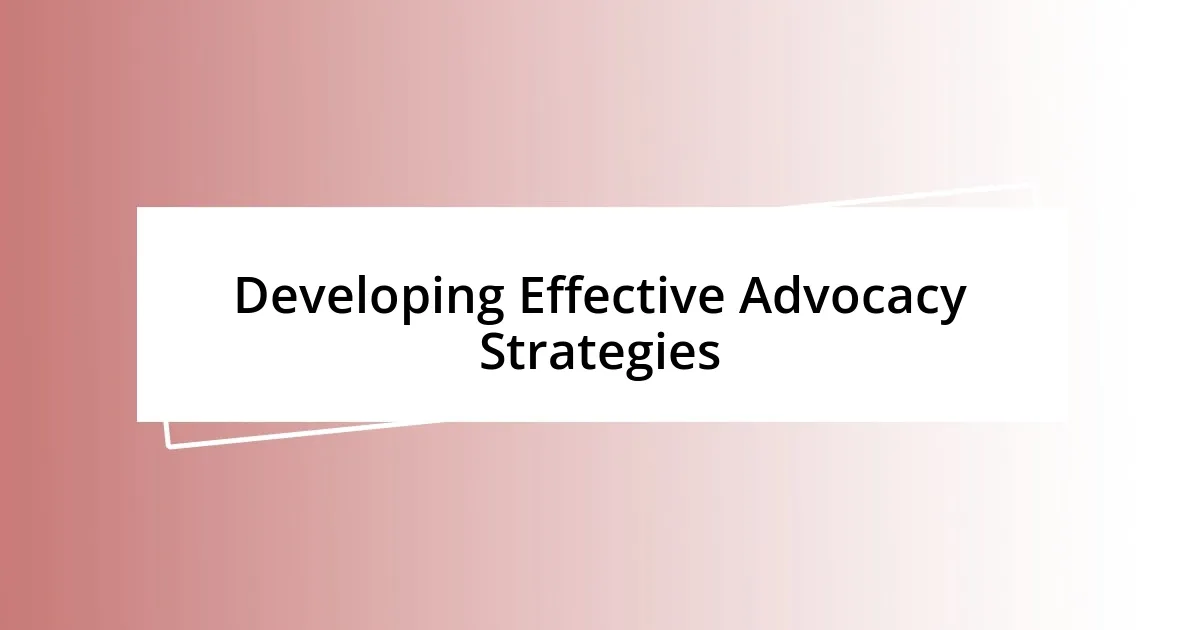
Developing Effective Advocacy Strategies
Developing effective advocacy strategies requires a clear understanding of your goals and the communities you represent. I still remember sitting down with a group of friends to brainstorm our objectives for a sustainable housing initiative. Each voice brought a unique perspective, and through our discussions, we identified key issues like affordability and accessibility that resonated deeply with our experiences. Have you ever sought feedback from those around you? That collaborative spirit not only refined our strategy but also created a sense of ownership among us.
Another essential element is leveraging data to support your arguments. I once attended a workshop where we learned how to interpret statistics effectively, transforming raw numbers into compelling narratives. For instance, when we presented findings about housing shortages, sharing the percent increase in homelessness over the years made the issue tangible. It was as if the numbers painted a vivid picture in the minds of our audience, driving home the urgency of our cause. How often do you connect facts with personal stories? When I did, I found that it captured attention more than just stating the stats alone.
Finally, adaptability is key in advocacy; we must be willing to reassess and shift our approach based on feedback and changing circumstances. During a recent campaign for environmental reforms, our group received criticism about the lack of inclusion of diverse voices. Rather than feeling discouraged, we hosted a series of open forums specifically aimed at engaging underrepresented communities. The insights I gained here were invaluable, revealing gaps in our strategy and strengthening our message. Isn’t it fascinating how a little flexibility can lead to greater impact? Embracing this adaptability not only enhanced our advocacy efforts but also fostered a deeper connection with the people we aimed to serve.
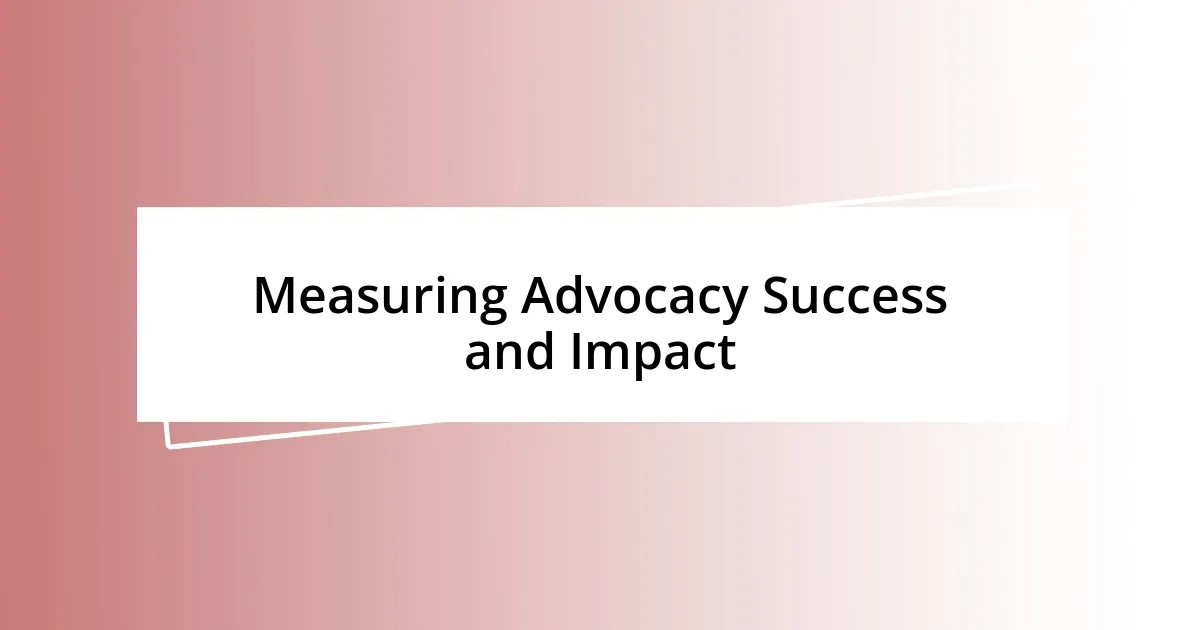
Measuring Advocacy Success and Impact
Measuring the success of advocacy efforts can sometimes feel like a daunting task. From my experience, one effective way to gauge impact is through the tangible changes in policy or community behavior. For instance, after a year of advocating for a local park that was overlooked, we finally saw funding allocated for its renovation. The joy I felt in that moment was profound; it’s a real indicator that our voices had made a difference.
Surveys are also an invaluable tool for assessing advocacy success. When I administered a feedback form to community members following one of our advocacy events, I was taken aback by the responses. Many expressed feeling empowered to speak out on issues they previously felt were ignored. It served as a reminder that the ripple effect of our efforts often extends beyond immediate outcomes. Have you ever witnessed a shift in someone’s mindset? Those moments fuel the passion needed to keep pushing for change.
Furthermore, storytelling can be a powerful measure of impact. I recall sharing my own journey at a community forum, only to discover several attendees were inspired to share their stories in return. Seeing how my narrative resonated with others made it clear that advocacy is as much about changing hearts as it is about changing policies. Isn’t it incredible to realize that one person’s experience can spark a broader dialogue? This realization drives home the importance of reflecting not just on what we achieve, but on how we inspire others along the way.
